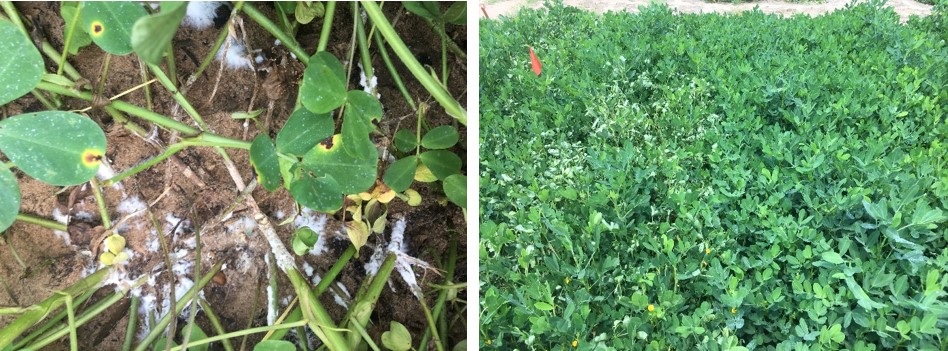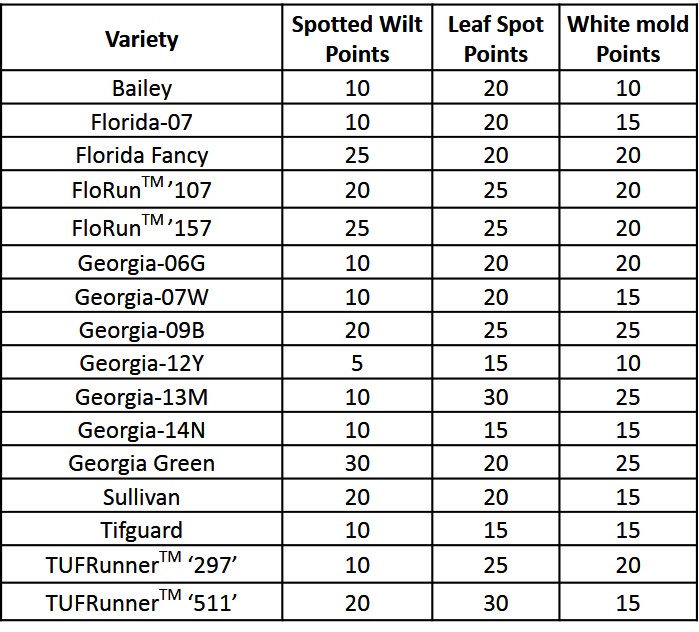
Figure 1. Left panel- signs of the fungus that causes white mold and Right Panel- Symptoms of white mold disease in peanut in Marianna, FL July 28, 2017. Photo by Barry Tillman
The rainy June and July have been both a blessing and a curse. A blessing because the crops have not suffered for lack of water and a curse for peanut because wet fields prevented or delayed fungicide application and because it provides ideal conditions for fungal diseases to develop.
This is especially true for leaf spots and white mold. Table 1 shows the monthly rainfall totals to date from the Florida Automated Weather Network (FAWN) stations in Marianna and Jay, Florida. June was especially wet and this could mean increased risk of leaf spot and other fungal diseases in the coming weeks, especially if rainfall prevented or delayed application of fungicides. Table 2 shows the temperatures (Average, Minimum and Maximum) across the panhandle. Temperatures in July have been favorable for the fungus that causes white mold and it is very active in our plot in Marianna (Figure 1).
It’s a good time to scout fields for signs and symptoms of disease to make sure your fungicide program is doing the job. Additionally, it’s good to know the risk of disease for your peanut variety. For most, that’s Georgia-06G and comparatively, it is at most risk for white mold.
Varieties vary considerably with some more at risk for leaf spot and others for white mold (Table 3). Knowing the relative risk for your variety, coupled with conducive weather conditions, will help make the best decisions for minimizing disease loss.

Table 3. Disease risk points for peanut varieties- lower points mean less risk. Adapted from the 2017 Peanut Rx.
- FloRun™ ‘725’ – A New High Yielding, Disease Resistant Peanut Variety - April 4, 2025
- Don’t Lean Too Hard on Your Peanut Variety for Disease Resistance - June 28, 2024
- ‘Arnie’ – A New Peanut Variety Released by the University of Florida - February 2, 2024


